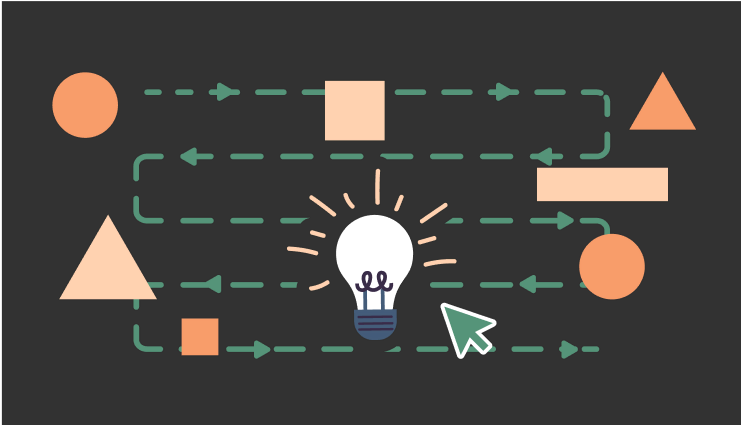Enter the ADDIE Model – a proven, data-backed approach that has revolutionized instructional design worldwide. What sets ADDIE apart? The ADDIE Model reigns supreme for three compelling reasons:
- Unparalleled Adaptability: The ADDIE Model’s greatest strength lies in its adaptability. Whether you’re crafting training for a corporate team, a classroom of students, or global online learners, you can tailor ADDIE to fit any context.
- Precision at Every Phase: ADDIE’s systematic approach is a hallmark of its success. With distinct phases covering Analysis, Design, Development, Implementation, and Evaluation, it leaves no room for guesswork.
- Continuous Improvement: The ADDIE Model isn’t just about designing a course; it’s about continuously enhancing it. Through the Evaluation phase, you gather feedback, identify areas for improvement, and refine your training materials. This iterative process ensures that your courses evolve alongside the ever-changing needs of your learners.
The Acronym “ADDIE”
At the heart of the ADDIE Model lies a simple yet powerful acronym that encapsulates its systematic approach to instructional design services. ADDIE stands for:
- Analysis: This is the phase where you assess the needs and goals of your learners and identify any potential challenges or constraints. It’s all about understanding the who, what, and why of your training program.
- Design: In the design phase, you take the insights gathered from the analysis and outline the structure, content, and objectives of your training. This is where the blueprint for your course takes shape.
- Development: Here, you bring your design to life by creating the actual training materials, whether they be physical resources, digital content, or interactive modules. Development is the hands-on phase where your course comes to fruition.
- Implementation: During the implementation phase, your training program is introduced to the intended audience. This stage involves putting your thoughtfully designed materials into action, whether through in-person sessions or online platforms.
- Evaluation: Lastly, evaluation involves assessing the effectiveness of your training program. Did it meet its objectives? Were learners engaged and satisfied? This phase is crucial for continuous improvement.
In a nutshell, ADDIE is your roadmap to designing effective and learner-centric training programs. It guides you through a logical sequence of steps, ensuring that your educational initiatives are not only well-structured but also consistently impactful.
Analysis Phase
In the Analysis phase of the ADDIE Model, instructional designers become detectives, seeking to unravel the unique needs and characteristics of their learners. Picture this: You’re tasked with developing a comprehensive safety training program for a manufacturing company. Before designing a single slide or crafting a quiz question, you delve deep into the workplace, interviewing employees, observing processes, and reviewing incident reports. Your mission is to uncover potential hazards and understand the knowledge gaps that need filling. It’s like piecing together a puzzle where the final image ensures the safety and well-being of all employees.
Design Phase
With the insights gathered during the Analysis phase, it’s time to don your architect’s hat in the Design phase. Imagine you’re an architect designing a dream house. You take all the requirements and preferences of the homeowners into account, sketching out a blueprint that ensures every room serves its purpose seamlessly. In the instructional design world, this means crafting the structure and content of your training program. You define learning objectives, create lesson plans, and outline the course flow. It’s akin to ensuring that every room in your dream house has the right size, shape, and purpose.
Development Phase
Now, in the Development phase, it’s time to breathe life into your design. Think of yourself as a sculptor, chiseling away at a block of marble to reveal a masterpiece. You take your well-crafted blueprint and start creating the actual learning materials – be it video lessons, interactive modules, or printed guides. Just as the sculptor painstakingly shapes each curve and contour, you meticulously craft every element of your training program to ensure it engages, educates, and resonates with your learners.
Implementation Phase
Imagine the excitement of a theater director on opening night. In the Implementation phase, you take center stage as you roll out your training program to your audience. It’s showtime! Whether you’re conducting in-person workshops or launching an e-learning platform, this is where your hard work meets its intended audience. Like a director ensuring actors hit their marks, you oversee the delivery of your training, making adjustments as needed to ensure a seamless and impactful experience.
Evaluation Phase
Finally, we arrive at the Evaluation phase, where you play the role of a film critic reviewing a blockbuster movie. You gather feedback from your learners and stakeholders, analyzing the impact and effectiveness of your training program. Did it achieve its objectives? Were there any unexpected plot twists (good or bad)? This critical feedback loop ensures that your training program isn’t a one-time hit but an evolving success story.
To explore each ADDIE phase and craft impactful training, check out our step-by-step guide for top-notch courses.
Pros and Cons of the ADDIE Model
The ADDIE Model, like any instructional design framework, comes with its own set of strengths and weaknesses. So, let’s explore these aspects to provide a balanced view of its effectiveness.
Pros
| Key Advantages of the ADDIE Model | |
| Systematic Approach | ADDIE offers a clear, step-by-step process that ensures thorough planning and development, reducing the likelihood of overlooking critical elements. |
| Customization | Its adaptability allows instructional designers to tailor training programs to the specific needs and preferences of learners, industries, or organizations. |
| Quality Assurance | With an emphasis on evaluation, ADDIE promotes continuous improvement, making it easier to refine training programs and enhance their effectiveness over time. |
| Consistency | Its structured approach ensures a consistent learning experience for all learners, regardless of when or where they access the training. |
| Flexibility | ADDIE can be applied to various learning environments, from traditional classrooms to online courses, making it versatile for different training needs. |
Cons
| Limitations of the ADDIE Model | |
| Time-Consuming | The thoroughness of ADDIE’s phases can make it a time-intensive process, which might not be suitable for projects with tight deadlines. |
| Resource-Intensive | Developing training materials, conducting evaluations, and implementing changes can require significant resources, both in terms of time and budget. |
| Lack of Agility | Some argue that ADDIE’s structured approach can be less agile and adaptable compared to more iterative design models. |
| Potential Over-Planning | Overemphasis on the analysis and design phases may lead to excessive planning, potentially stifling creativity or hindering responsiveness to learner feedback. |
| Not a One-Size-Fits-All | While highly effective for many scenarios, ADDIE might not be the best fit for all types of training programs, particularly those that require rapid development or frequent updates. |
Conclusion: Until You’re Left Wanting More
As we bid farewell, remember that the ADDIE Model is not just an acronym; it’s your magic wand to create training experiences that captivate, educate, and transform. Like a master chef crafting a delectable dish, you can use ADDIE to perfectly tailor learning experiences.
Unlock the full potential of your training initiatives with the tried-and-true ADDIE Model of instructional design. Whether you’re designing courses for classrooms, boardrooms, or digital realms, ADDIE will be your trusted companion on the path to instructional design greatness.
As always, keep learning and growing, and may your learners be engaged.
FAQ
What is the ADDIE training model?
What does the acronym ADDIE stand for?
How does the ADDIE model work?
Why is the ADDIE model important?
Who invented the ADDIE model?
Is the ADDIE model outdated?
Additional Resources
- ISFET – ADDIE Model Guide
URL: https://www.isfet.org/pages/addie-model - Purdue University Libraries – Understanding ADDIE (PDF)
URL: https://www.lib.purdue.edu/sites/default/files/directory/butler38/ADDIE.pdf - GameLearn – Mastering the ADDIE Instructional Design Model: A Comprehensive Guide
URL: https://www.game-learn.com/en/resources/blog/mastering-the-addie-instructional-design-model-a-comprehensive-guide/ - University of Washington Bothell – Introduction to ADDIE
URL: https://www.uwb.edu/it/addie






